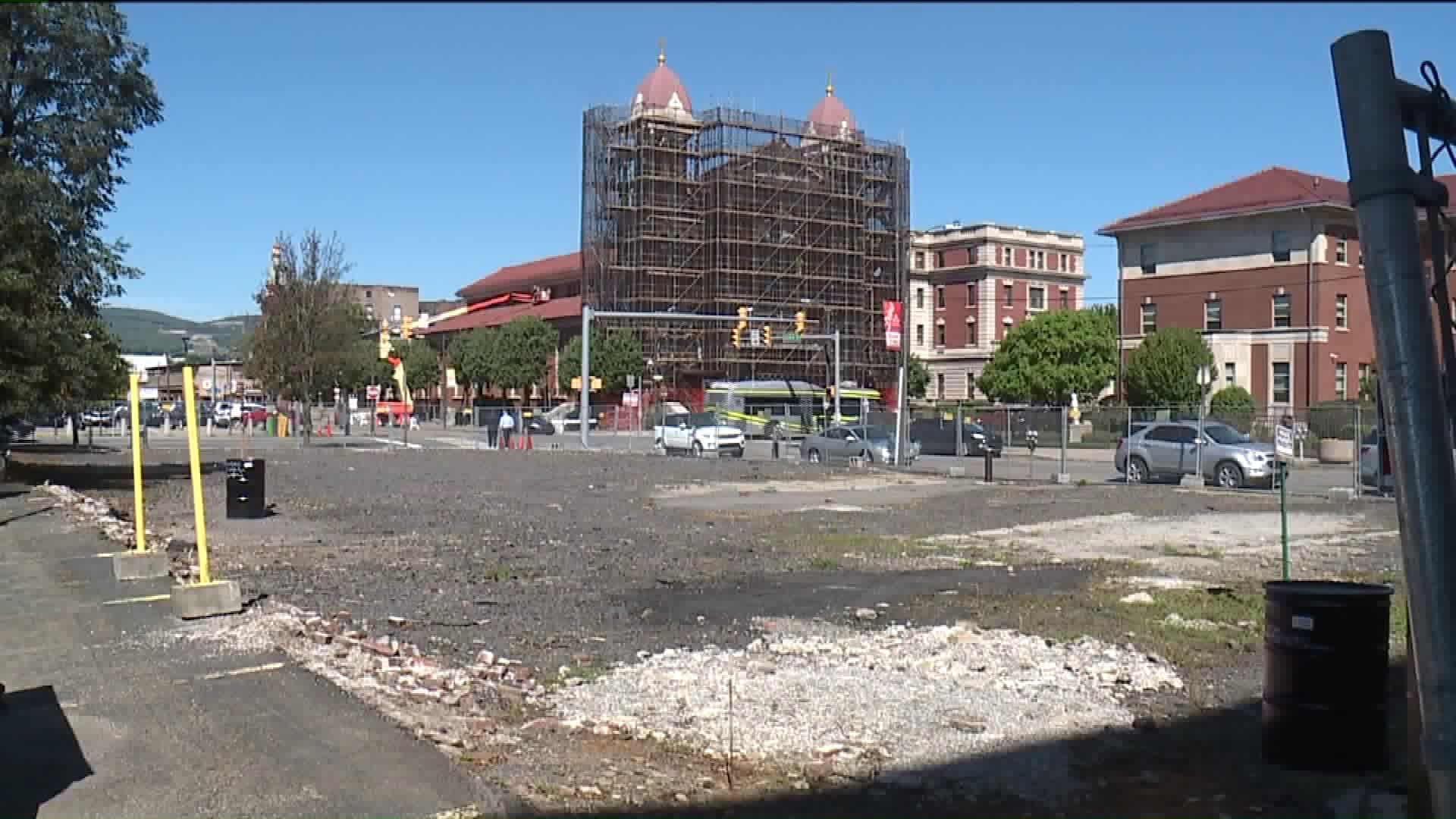SCRANTON -- Scranton's mayor has plans for a piece of undeveloped land in the city's downtown, but first, the city has to buy it and resolve one of its plaguing issues.
The mayor plans to put up some green in order to turn a barren spot into green space. The empty lot on Wyoming Avenue and Linden Street sits between two of the city's grandest churches: St. Peter's Cathedral, which is undergoing its own revamping, and St. Luke's Episcopal Church.
"Some people have said that the place they feel sometimes closest to God is in nature, so to have that between our two churches is kind of lovely, and it's so important for people to have space like that for quality of life," said Rev. Rebecca Barnes, St. Luke's Episcopal Church.
Most people will remember the spot as an old dry cleaner and newsstand, but now it's the largest piece of undeveloped land in downtown Scranton.
The building was torn down in 2009. There has been concern since then that the chemicals used in dry cleaning could have contaminated the soil, so it's sat owned by a company called RSM Maintenance. Scranton has reached a settlement to buy the property for $375,000.
"That's in exchange for any and all claims they would have on the property," explained Scranton Mayor Bill Courtright. "I think the thing that really we need to note is the potential exposure for the city of Scranton would have been twice as much money, and then we wouldn't have gotten the property."
Mayor Courtright says the owner could have sued the city to pay for the remediation of the contaminated soil. Instead, Scranton will seek grants for that and for the development of a pocket park.
Residents think that would better fit the neighborhood and the changing downtown.
"It sits between two historical buildings within the city, so anything to improve the area would be appreciated," said Monsignor Thomas Muldowney, Diocese of Scranton.
Scranton City Council still needs to approve the purchase of the land, the first of several steps in the plan, but the mayor expects to have ownership and at least some grass down by next spring.

